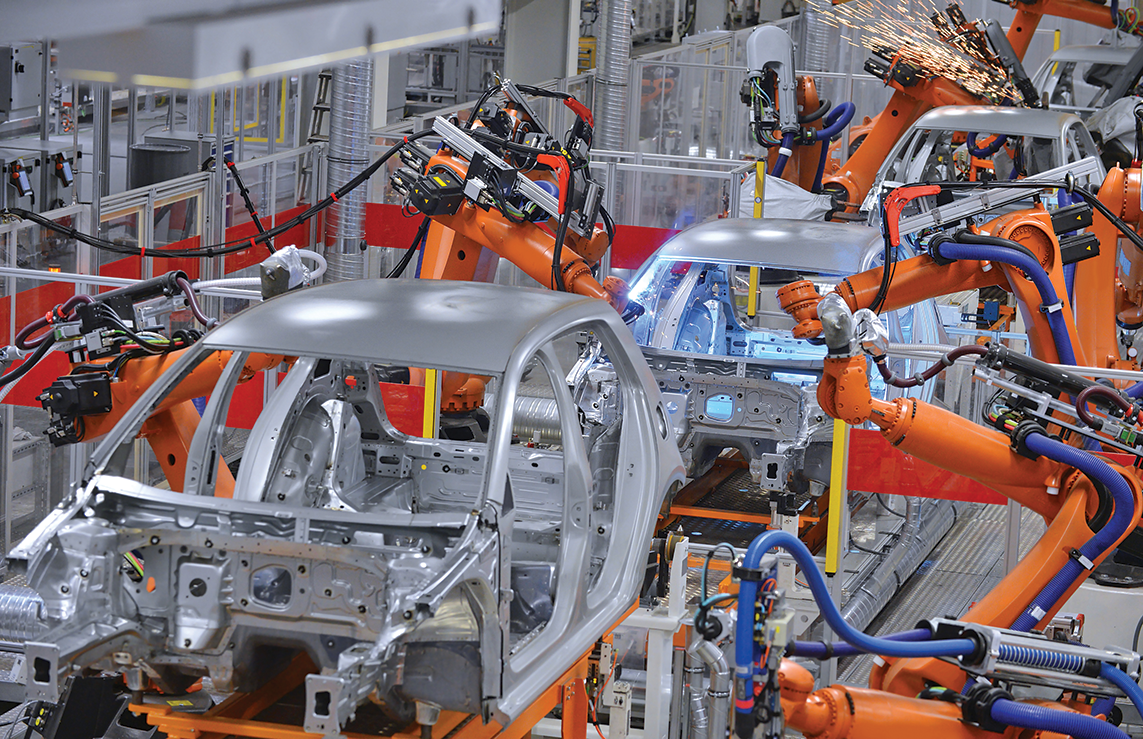Spot Weld Inspection

Spot welding is a technique used in industrial applications to weld thin metal sheets very quickly, often through automated systems. Spot welding is ever-present across the automotive manufacturing sector, where it’s used to construct car bodies and frames; a car contains an average of 5,000 welds.
The metal sheets are pressed together with two copper-alloy electrodes which hold the sheets together under tension. Current is then applied through the electrodes which melts the metal sheets and fuses them together at that spot, by creating a small area of fused metal known as the nugget.
Spot welding has a number of key benefits which have seen its widespread adoption across many industrial sectors. One of its main strengths is that it is very fast, when compared to other methods of welding, with most joints taking 200-600ms to achieve maximum strength. Another key benefit of spot welding is that it requires very little operator skill to perform properly, making it a great candidate for employment with automatic welding robots. In contrast with other common types of welding such as MIG & TIG, spot welding does not require many consumables to continue operation, merely a source of power and the occasional replacement electrode.
What kind of defects can be present within spot welds?
As with all welding techniques, if aspects of the process are incorrectly controlled, defects can occur in the finished piece which can make it unsuitable for service.There are a number of factors that need to be controlled to make a suitable spot weld such as the clamping force, current amount, electrode condition and geometry, the welding time, and others. Typically, the tolerances involved in these variables mean that a difference of 10-20% in an important factor is likely to degrade weld quality below suitable levels.
If the clamping force is too great, for example, it is possible to excessively indent the metal during the welding process, impacting the integrity of the part. If the clamping force is too weak, however, not enough contact will be made between the micro-surfaces of the two sheets which, counter-intuitively, leads to much greater heat generation and an unsuitable weld.
How are spot welds tested for quality?
There are a number of different ways to test a spot weld for quality. The oldest used technique is a destructive one, known as the peel test. A peel test involves, as the name would imply, peeling or prying the welded pieces apart physically until the weld breaks and then inspecting the inside.
The way the metal breaks apart, whether the pieces split or break, can determine the quality of the join. This can be useful to sample test batches for quality when no other method is available, but it is a time-consuming process that generates waste and sacrifices good welds.
An alternative and often preferable method is to use ultrasonic testing (UT) equipment. With UT, ultrasonic pulses are sent into the piece and the returning echo profile is assessed to infer material qualities. These come in different configurations, from large, fully-automated robotic systems to handheld single-spot devices used by operators on the factory floor.
The basic principle of operation for spot weld UT is for a small, high-frequency delay-line transducer to be placed on the weld after it has cooled to attempt to measure multiple back wall echoes from the top of the first piece to the bottom of the second piece. This can be achieved with a standard delay-line transducer, but there are also specialist units with water-filled membranes to avoid issues with surface geometry.
Testing spot welds with Elcometer NDT
For this application, we recommend our FD700DL+ flaw detector combined with a 15 MHz, 1/4" acrylic delay-line transducer. The FD700DL+ is our compact weld inspection gauge featuring 60/120Hz full colour LED screen, adjustable voltage pulser and full data logging suite. Its small size, tuneable pulser and excellent display visibility make it the perfect choice for rapid on-line spot weld inspections.
Click here to read the full application note on spot welding.
